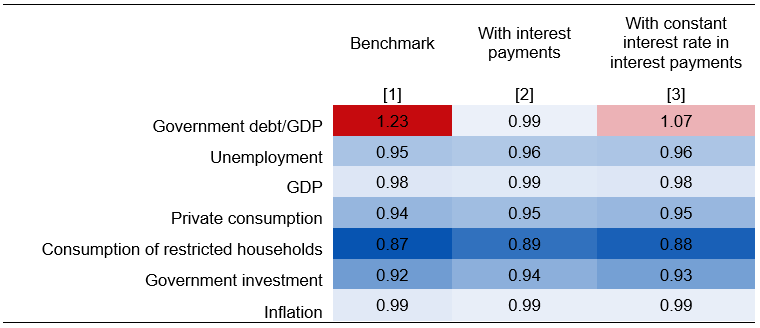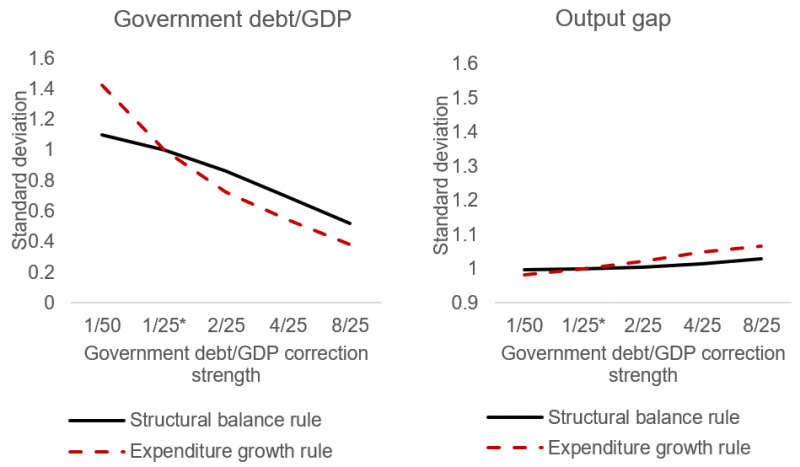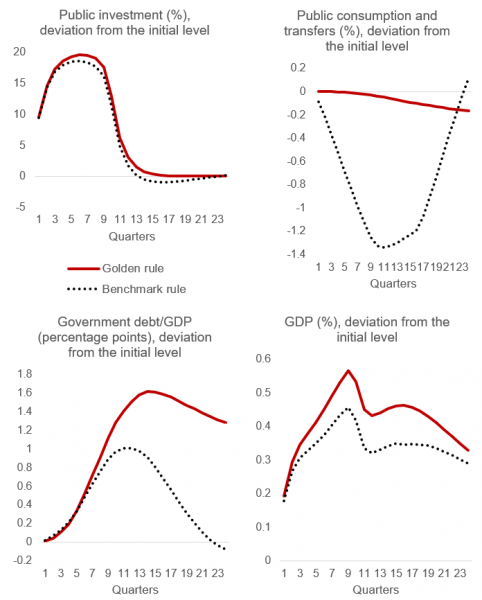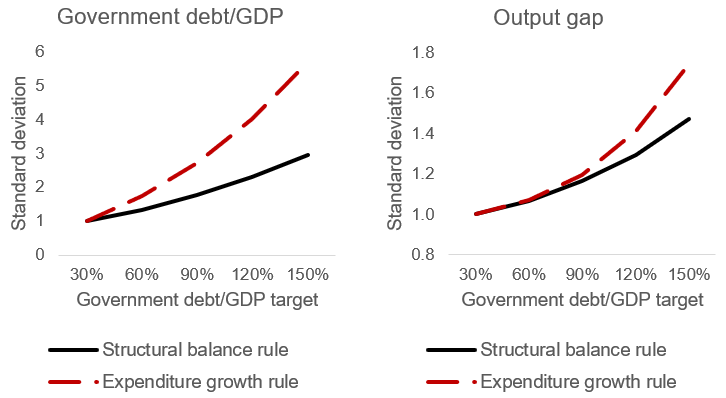References
Andrle, M., Bluedorn, J. C., Eyraud, L., Kinda, T., Brooks, P. K., Schwartz, G. and Weber, A. (2015). Reforming Fiscal Governance in the European Union. IMF Staff Discussion Notes 15/9, International Monetary Fund.
Benassy-Quere, A., Brunnermeier, M., Enderlein, H., Farhi, E., Fratzscher, M., Fuest, C., Gourinchas, P.-O., Martin, P., Pisani-Ferry, J., Rey, H., Schnabel, I., Veron, N., di Mauro, B. W. and Zettelmeyer, J. (2018). Reconciling risk sharing with market discipline: A constructive approach to euro area reform. CEPR Policy Insight 91.
Bušs, G., Grüning, P. and O. Tkačevs (2021) “Choosing the European Fiscal Rule”, Working Papers 2021/03. Latvijas Banka; available here.
Claeys, G., Darvas, Z. and Leandro, A. (2016). A proposal to revive the European Fiscal Framework. Bruegel Policy Contribution No. 2016/07.
Coibion, O., Gorodnichenko, Y. and Ulate, M. (2017). The Cyclical Sensitivity in Estimates of Potential Output. NBER Working Papers 23580, National Bureau of Economic Research, Inc.
Cordes, T., Kinda, T., Muthoora, P. S. and Weber, A. (2015). Expenditure Rules; Effective Tools for Sound Fiscal Policy? IMF Working Papers 15/29, International Monetary Fund.
Darvas, Z., Martin, P. and Ragot, X. (2018). European fiscal rules require a major overhaul. Bruegel Policy Contribution No. 2018/18.
European Fiscal Board (2019). Assessment of EU Fiscal Rules with a Focus on the Six and Two-pack Legislation.
Eyraud, L., Debrun, X., Hodge, A., Lledo, V. D. and Pattillo, C. A. (2018). Second-Generation Fiscal Rules; Balancing Simplicity, Flexibility, and Enforceability. IMF Staff Discussion Notes 18/04, International Monetary Fund.
German Council of Economic Experts (2017). Towards a forward-looking economic policy. Annual Report.
International Monetary Fund (2014). Public expenditure reform: Making diffcult choices. Fiscal Monitor.
Kamps, C., Leiner-Killinger, R. D. S. N., Ruffer, R. and Sondermann, D. (2014). The identification of fiscal and macroeconomic imbalances – unexploited synergies under the strengthened EU governance framework. Occasional Paper Series 157, European Central Bank.
Kamps, C. and Leiner-Killinger, N. (2019). Taking stock of the functioning of the EU fiscal rules and options for reform. Occasional Paper Series 231, European Central Bank.
Symansky, S. A., Debrun, X. and Epstein, N. P. (2008). A New Fiscal Rule; Should Israel “Go Swiss”. IMF Working Papers 08/87, International Monetary Fund.









